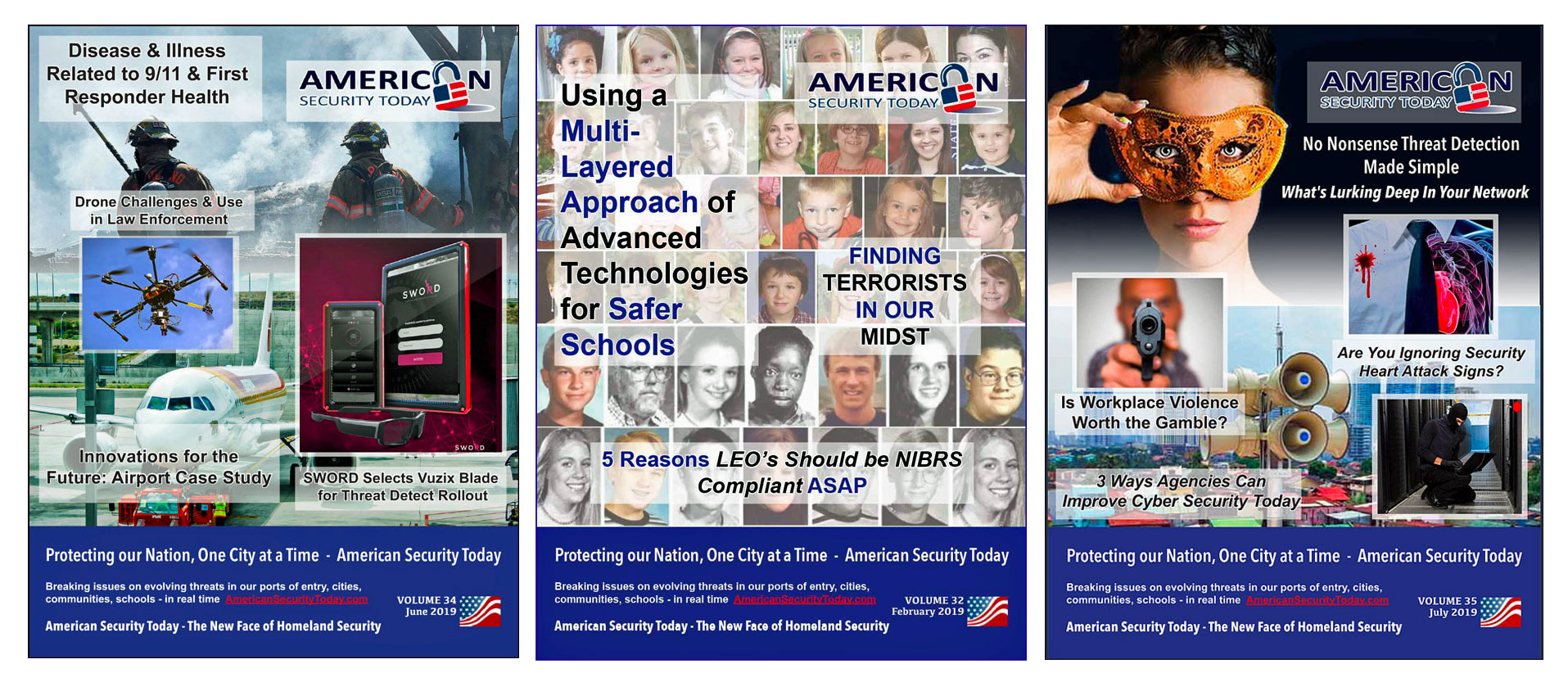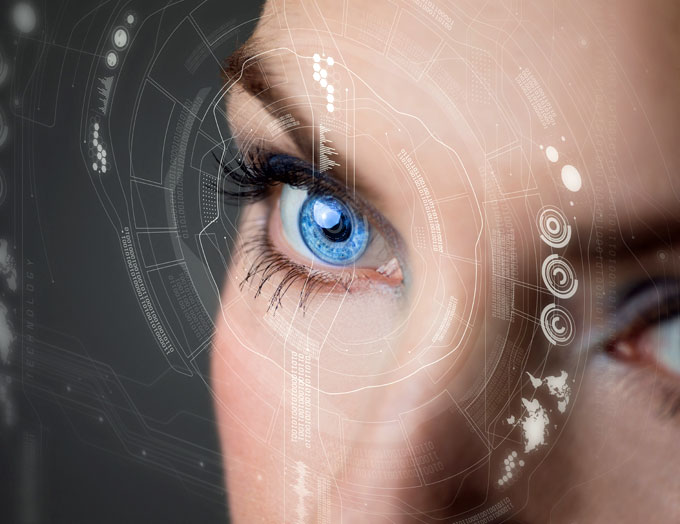
By Mohammed Murad, Vice President Global Sales and Business Development at LG Electronics USA – Iris ID Systems
As people continue to return to the workplace, facility managers have to worry about COVID-19 testing, social distancing, personal protective equipment and disinfecting commonly used areas.
Let’s take a look at some of the contactless ways to get employees into the building or critical areas within the facility.
Mobile credentialing
Mobile credentialing is a recent idea touted as a contactless access control system.
It’s a great concept having people carry credentials on their smartphones, enabling them to access doors without touching any shared devices.

The technology requires employees to download an app and open an email with the credential data.
The need for an organization to purchase and print plastic credentials is eliminated.
However, there are still a couple of potential downsides to mobile credentialing.
Recent market research estimated about 80% of U.S. adults own a smartphone.
What does an employer do with the other 20%?
Also, a significant number of employees feel uncomfortable using their devices for organizational business.
Issuing them a company-provided smartphone is prohibitively expensive for most employers.
Also, the apps used by the technology are targeted by experienced hackers to gain access to the system.
Biometrics
Biometrics offers a better contactless solution with employees standing a foot or two from a reader to open a door.
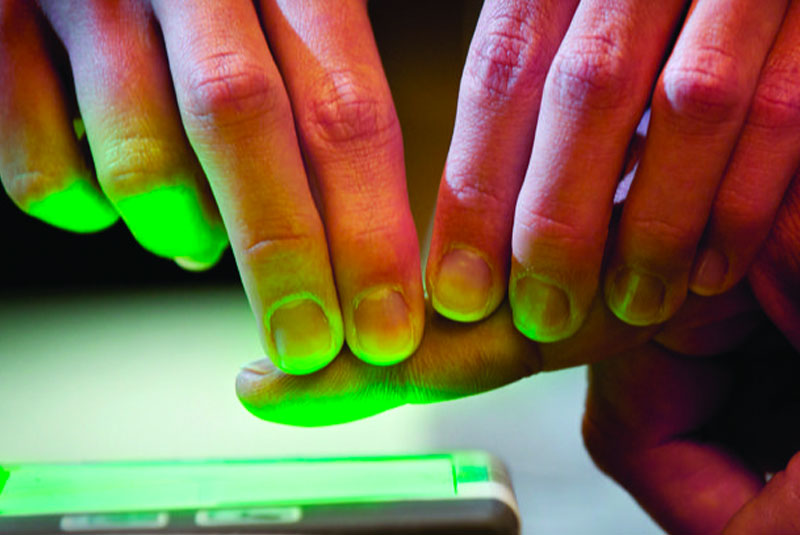
Whether an employer is using a facial or iris-based system, there is no way workers can lose the credentials or have them stolen.
And there is no longer any friction over the concept of BYOD (bring your own device).
So, is there a difference in which biometric to choose?
I’m biased, but iris-based systems have consistently been shown to be the most accurate and versatile of commonly used biometric systems.
In biometrics there is what we call the “big three” which refers to the three most deployed biometric technologies – iris facial and fingerprint recognition.
They are similar in that they are all based on unique measurements of the body, yet they are also very different.
The table below looks at those differences.
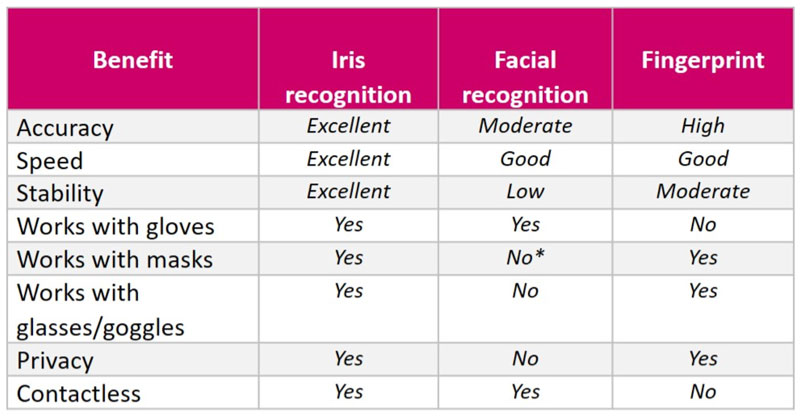
Fingerprints
Fingerprint technology is one of the oldest biometric forms of identification.

It measures the patterns made by the ridges and furrows on a person’s fingers.
Its accuracy rate is high and fingerprints tend to remain stable throughout a person’s life. But it cannot be used with gloves or dirty or injured fingers.
People who work with their hands can damage or wear down their fingerprints making them unreadable.
It is not contactless and usually requires placing a finger or fingers on a scanner.
According to medical professionals, viruses like the novel coronavirus can live on plastic and stainless-steel surfaces for two to three days.
Scanners could transmit the virus if not sanitized after each use.
This technology requires people to register their fingerprints, so it does provide a potential level of privacy for users.
Facial recognition
Facial recognition technology identifies people using facial features. It recognizes people fairly quickly, but facial features change over time.
Beards, masks, goggles and glasses can hinder identification. The technology is getting better, but it still has the lowest accuracy rate of the “big three.”
*Some vendors are looking to develop technology the works with face mask but its accuracy is debatable. It may work with some subjects in one-to-one verification but the jury is still out on attaining higher accuracy with mask.
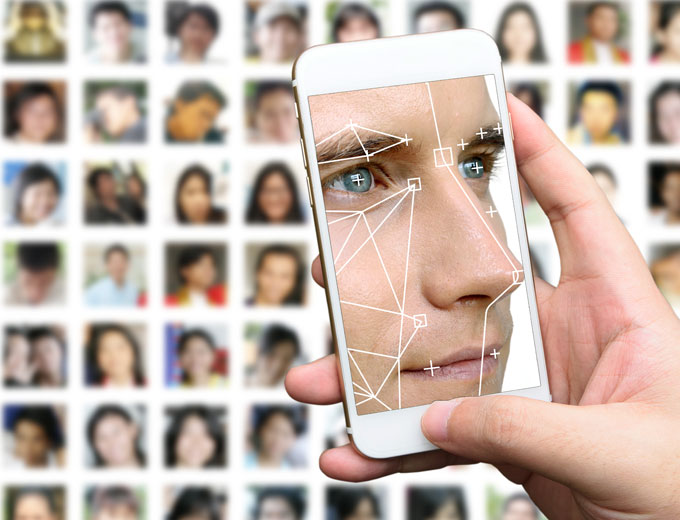
The technology is advancing, but it may still need more time.
The transmission of viruses and bacteria is not an issue as facial recognition is contactless and more expensive technology can be used at a great distance.
It allows image capture without a person’s knowledge or consent, which has led to strong objections about the loss of personal privacy.
And some cities and regions have banned facial recognition on those grounds.
Iris Recognition
Iris recognition is widely considered the most accurate and secure of the “big three.”
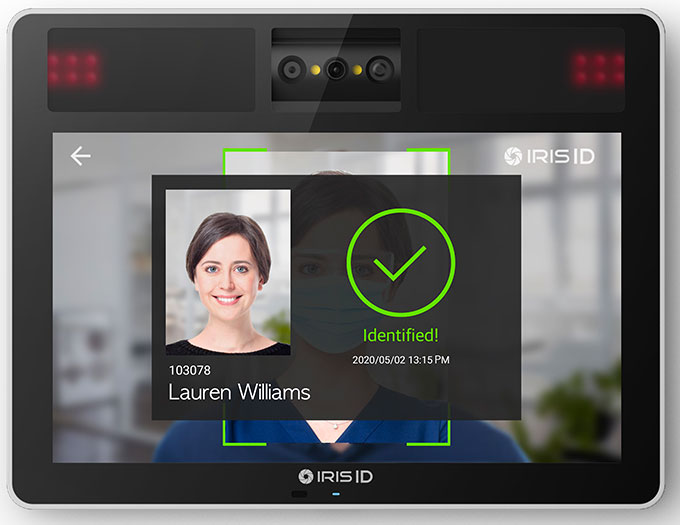
It matches the data rich patters in a person’s iris which is the visible color portion of the eye surrounding the pupil.
No two irises are the same (even identical twins have unique patterns) and the iris is stable from about the age of one, so it works well for registering children.
There is a tiny outlier population for successfully deploying iris recognition, as almost everyone has at least one eye.
The liveness detection eliminates the use of a photograph or 3-D model to spoof the system.
And, maybe most importantly, iris-based technology is not impacted by employees wearing personal protective gear (gloves, masks and goggles), a common occurrence during the COVID-19 pandemic.

It is also contactless. A person stands 30 centimeters to 1.2 meters from a camera to enroll and be identified.
The process takes less than two seconds.
Iris recognition has fewer privacy concerns because people must actively participate in registration and identification. Images cannot be taken without the person’s knowledge.
Each of the “big three” biometrics are powerful identification and authorization tools.
More organizations are adding biometric tools like these.
And in many cases, we are seeing enterprises and governments taking the power of biometrics to the next level by deploying more than one of these solutions.
Authorities are urging business to add more complex forms of authentication that includes biometrics.
The selection of biometrics will solely rely on the application and need for security and accuracy.
To Learn More on a contactless access control system capable of accommodating virtually any size employee base, please contact Iris ID here.
(Learn More about Iris ID products and applications. The company’s IrisAccess® is the world’s leading deployed iris recognition platform and is used in thousands of locations authenticating the identities of millions of people daily. Courtesy of Iris ID and YouTube.)
About the Author

Iris ID, a leading global provider of iris recognition technology, has been recognized with Platinum Award Wins in Four out of Five Annual ‘ASTORS’ Homeland Security Awards Programs.
Mohammed Murad has over 25 years of experience in the field of iris recognition technologies, and serves as Vice President Global Sales and Business Development at LG Electronics USA Inc. – Iris ID Systems, Inc..
Iris ID Takes Platinum in the 2020 ‘ASTORS’ Awards Program
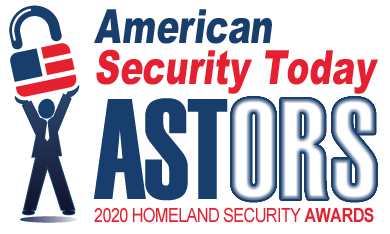 American Security Today’s ‘ASTORS’ Homeland Security Awards program is in its Fifth Year and continues to recognize the Outstanding Innovations of top firms and agencies in the Homeland Security and Public Safety fields.
American Security Today’s ‘ASTORS’ Homeland Security Awards program is in its Fifth Year and continues to recognize the Outstanding Innovations of top firms and agencies in the Homeland Security and Public Safety fields.
2020 has been a very challenging year for everyone due to the COVID-19 pandemic and the much heralded AST ‘ASTORS’ Awards Winners Presentations and exclusive Luncheon at the Jacob Javits Center in NYC has been canceled and rescheduled for 2021 due to the virus.

However, the 2020 ‘ASTORS’ Homeland Security Awards Program was again a huge success and many new categories were added including a section for COVID-19 Detection and Innovation.
Iris ID
Best Facial / Iris Recognition System
-
IrisTime Management System & iT100 platform
-
IrisTime is an easy-to-use platform with fast auto focus and iris/face capture at distances of up to 24 inches. Identity authentication takes only a second.
-
IrisTime™ is a fully customizable biometric identification platform designed to meet the needs of organizations small and large.
(Major human resource solution providers and software developers can work with IrisTime’s open Android-based operating system to create new apps providing affordable solutions for basic or very specific requirements of virtually any organization. Courtesy of Iris ID and YouTube.)
-
It is a product of Iris ID, the global leader in iris recognition technology for 20 years. It is designed to enable development of best-of-class applications that will reside on the device.
-
The fully customizable IrisTime platform also enables a user to design its own applications.

-
Device management tools will be part of the application console. IrisTime includes the iTMS (IrisTime Management Service) application to manage the device on networks.
-
iTMS functionality will also be available in API form to enable software developers to integrate device management in custom applications.
-
Iris ID was also recognized with Platinum Award Wins in the 2019, 2018 and 2016 ‘ASTORS’ Awards Programs.
The 2020 ‘ASTORS’ Awards Program is sponsored by ATI Systems, Attivo Networks, Automatic Systems, Desktop Alert, X.Labs and Reed Expositions, every one a returning Sponsor from 2019.
Why American Security Today?
The traditional security marketplace has long been covered by a host of publications putting forward the old school basics to what is Today – a fast changing security landscape.
The traditional security marketplace has long been covered by a host of publications putting forward the old school basics to what is Today – a fast changing security landscape.
American Security Today is uniquely focused on the broader Homeland Security & Public Safety marketplace with over 75,000 readers at the Federal, State and local levels of government as well as firms allied to government.
American Security Today brings forward a fresh compelling look and read with our customized digital publications that hold readers eyes throughout the story with cutting edge editorial that provides solutions to their challenges.
Harness the Power of the Web – with our 100% Mobile Friendly Publications

The AST Digital Publications is distributed to over 75,000 qualified government and homeland security professionals in federal, state and local levels.
‘PROTECTING OUR NATION, ONE CITY AT A TIME’
AST Reaches both Private & Public Experts, essential to meeting these new challenges.
Today’s new generation of public safety and security experts need real-time knowledge to deal with domestic and international terrorism, lone wolf attacks, unprecedented urban violence, shifts in society, culture and media bias – making it increasingly difficult for Homeland Security, Law Enforcement, First Responders, Military and Private Security Professionals to implement coordinated security measures to ensure national security and improve public safety.
These experts are from Government at the federal, state and local level as well as from private firms allied to government.
AST provides a full plate of topics in our AST Monthly Magazine Editions, AST Website and AST Daily News Alerts, covering 23 Vital Sectors such as Access Control, Perimeter Protection, Video Surveillance/Analytics, Airport Security, Border Security, CBRNE Detection, Border Security, Ports, Cybersecurity, Networking Security, Encryption, Law Enforcement, First Responders, Campus Security, Security Services, Corporate Facilities, and Emergency Response among others.
AST has Expanded readership into integral Critical Infrastructure audiences such as Protection of Nuclear Facilities, Water Plants & Dams, Bridges & Tunnels, and other potential targets of terrorism.
Other areas of concern include Transportation Hubs, Public Assemblies, Government Facilities, Sporting & Concert Stadiums, our Nation’s Schools & Universities, and Commercial Business Destinations – all enticing targets due to the large number of persons and resources clustered together.
To learn more about the 2020 ‘ASTORS’ Homeland Security Award Winners solutions, please be on the lookout for the 2020 ‘ASTORS’ CHAMPIONS Edition Fully Interactive Magazine – the Best Products of 2020 ‘A Year in Review’.
The Annual CHAMPIONS edition includes a review of the ‘ASTORS’ Award Winning products and programs, highlighting key details on many of the winning firms products and services, includes video interviews and more.
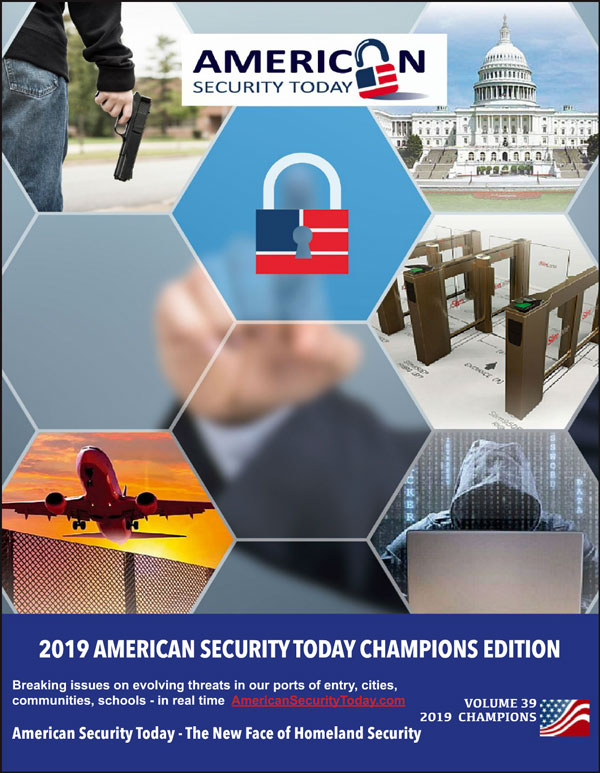 It will be your Go-To source throughout the year for ‘The Best of 2020 Products and Services‘ endorsed by American Security Today, and can satisfy your agency’s and organization’s most pressing Homeland Security and Public Safety needs.
It will be your Go-To source throughout the year for ‘The Best of 2020 Products and Services‘ endorsed by American Security Today, and can satisfy your agency’s and organization’s most pressing Homeland Security and Public Safety needs.
From Physical Security (Access Control, Critical Infrastructure, Perimeter Protection and Video Surveillance Cameras and Video Management Systems), to IT Security (Cybersecurity, Encryption, Data Storage, Anti-Malware and Networking Security – Just to name a few), the 2020 ‘ASTORS’ CHAMPIONS EDITION will have what you need to Detect, Delay, Respond to, and Mitgate today’s real-time threats in our constantly evolving security landscape.
It also includes featured guest editorial pieces from some of the security industry’s most respected leaders, and recognized firms in the 2020 ‘ASTORS’ Awards Program.
-
For a complete list of 2020 ‘ASTORS’ Award Winners, click here.
For more information about the Annual ‘ASTORS’ Awards or All Things American Security Today, please contact Michael Madsen, AST Publisher at mmadsen@americansecuritytoday.com.
AST strives to meet a 3 STAR trustworthiness rating, based on the following criteria:
- Provides named sources
- Reported by more than one notable outlet
- Includes supporting video, direct statements, or photos


















